A Complete Ranking of the Top 10 Francis Ford Coppola Movies
Regarded as one of the most influential directorial forces of cinema, Coppola’s career has spanned over five decades, producing some of the most famous and powerful films ever. In essence, Coppola’s works revolve around stories of complex characters tackling profound moral themes, often contrasted with a dramatic historical or social backdrop. The ranking explores the top 10 films of Coppola’s in terms of critical success, influence, and quality of storytelling.
The Godfather (1972)
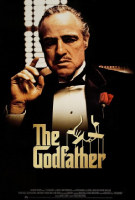
The Godfather is a landmark film that redefined American cinema. At its core, it’s the story of a powerful New York crime family led by Vito Corleone and the reluctant transformation of his son Michael into a ruthless leader. But it’s much more than just a gangster movie. The film explores themes of tradition, loyalty, family duty and the costs of power. Coppola’s direction is subtle and precise, allowing each scene to build naturally.
Apocalypse Now (1979)
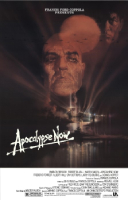
Based on Joseph Conrad’s novella Heart of Darkness, Apocalypse Now shifts the story to Vietnam, where Captain Willard is sent on a dangerous mission to kill a rogue officer, Colonel Kurtz. The film captures the chaos, confusion, and moral breakdown of war in a way no other film has. It’s not just a war movie – it’s a journey into the darkest corners of the human mind. Coppola famously faced delays, storms, budget overruns and a stressed cast, but these challenges added to the film’s eerie, unfiltered atmosphere.
The Godfather Part II (1974)
The Godfather Part II deepens and expands the world of the first film. It tells two parallel stories – Michael Corleone’s cold and calculated rise to power and a young Vito Corleone’s early life in Sicily and New York. The storytelling is bold, showing how one generation’s survival strategy can become the next generation’s downfall. The film explores betrayal, loss, and the loneliness of leadership. It’s a rare case of a sequel that’s considered as strong – if not stronger – than the original.
The Conversation (1974)
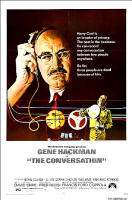
Released the same year as The Godfather Part II, The Conversation is a quieter and more personal film. It follows Harry Caul, a sound surveillance expert who begins to question the ethical implications of his work. As he listens again and again to a recorded conversation, his paranoia grows. The film explores themes of privacy, guilt and isolation – ideas that are still very relevant today. Coppola’s direction is restrained but powerful, and Gene Hackman gives a brilliant performance as a man haunted by what he hears and what he can’t control.
Bram Stoker’s Dracula (1992)
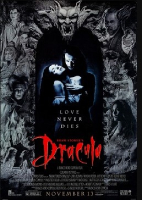
Coppola’s version of Dracula is more than a horror movie – it’s a love story filled with visual flair and emotional weight. Starring Gary Oldman, Winona Ryder, and Anthony Hopkins, the film draws closely from the original novel but adds a romantic and tragic dimension to the vampire legend. Coppola used old-school film techniques, including miniatures, shadows, and in-camera effects, giving the film a rich, theatrical look.
The Outsiders (1983)
Coppola tells a simple yet meaningful story of teenage boys trying to find their place in a divided world within The Outsiders. Set during the 1960s and based on the novel by S.E. Hinton, the story revolves around Ponyboy, Johnny, and the other working-class kids called Mudguts or Greasers while they battle against the privileged types called Socs. The story embodies the intensity and confusion of adolescence and doesn’t shy away from pain, fear, and hope.
Rumble Fish (1983)
Rumble Fish, released the same year as The Outsiders, is a much more stylised and artistic film. It follows Rusty James, a confused teenager looking up to his older brother, The Motorcycle Boy, who returns home from a mysterious trip. Unlike most teen films, this one is full of visual experiments – black-and-white cinematography, dramatic shadows, and occasional bursts of colour. It feels like a dream or a poem rather than a straightforward story.
Tucker: The Man and His Dream (1988)
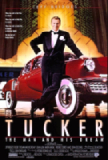
Tucker is about creativity and independence and should be an inspiration. Preston Tucker was an engineer and entrepreneur who challenged the Big Three motor companies of the 1940s with a safer, faster, and more modern automobile. Against the charm of Jeff Bridges, Tucker was thrust upon the screen as the scherzo, the underdog full of ideas and passion. The film coloured its story in almost comic-book fashion and was a tribute to innovation, family, and American ambition.
Peggy Sue Got Married (1986)
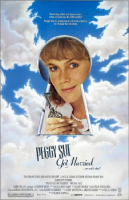
The focus of this movie is time travel to go back and fix one’s mistakes, done a little lightly and with warm emotions. Kathleen Turner appears as Peggy Sue, a middle-aged woman fainting at the school reunion and awakening in her teenage life. She evaluates her present world with new eyes and reflections on some choices she has made and relationships she did not value. There is nostalgia and some real heart in this movie that gives the viewers the opportunity to reflect on what they would do differently.
The Rainmaker (1997)
Rainmaker is a legal drama adapted from one of John Grisham’s novels, and with Coppola’s human tempering, it feels like quite a different entity. The premise is straightforward, with young, newly-graduated lawyer Rudy Baylor taking on a corrupt insurance company which refuses coverage for a boy who is dying. Differently from other courtroom thrillers that are showy with stunts, this justice-based film centers on character. Matt Damon plays Rudy with great sincerity, supported by Danny DeVito and Jon Voight, among others.

